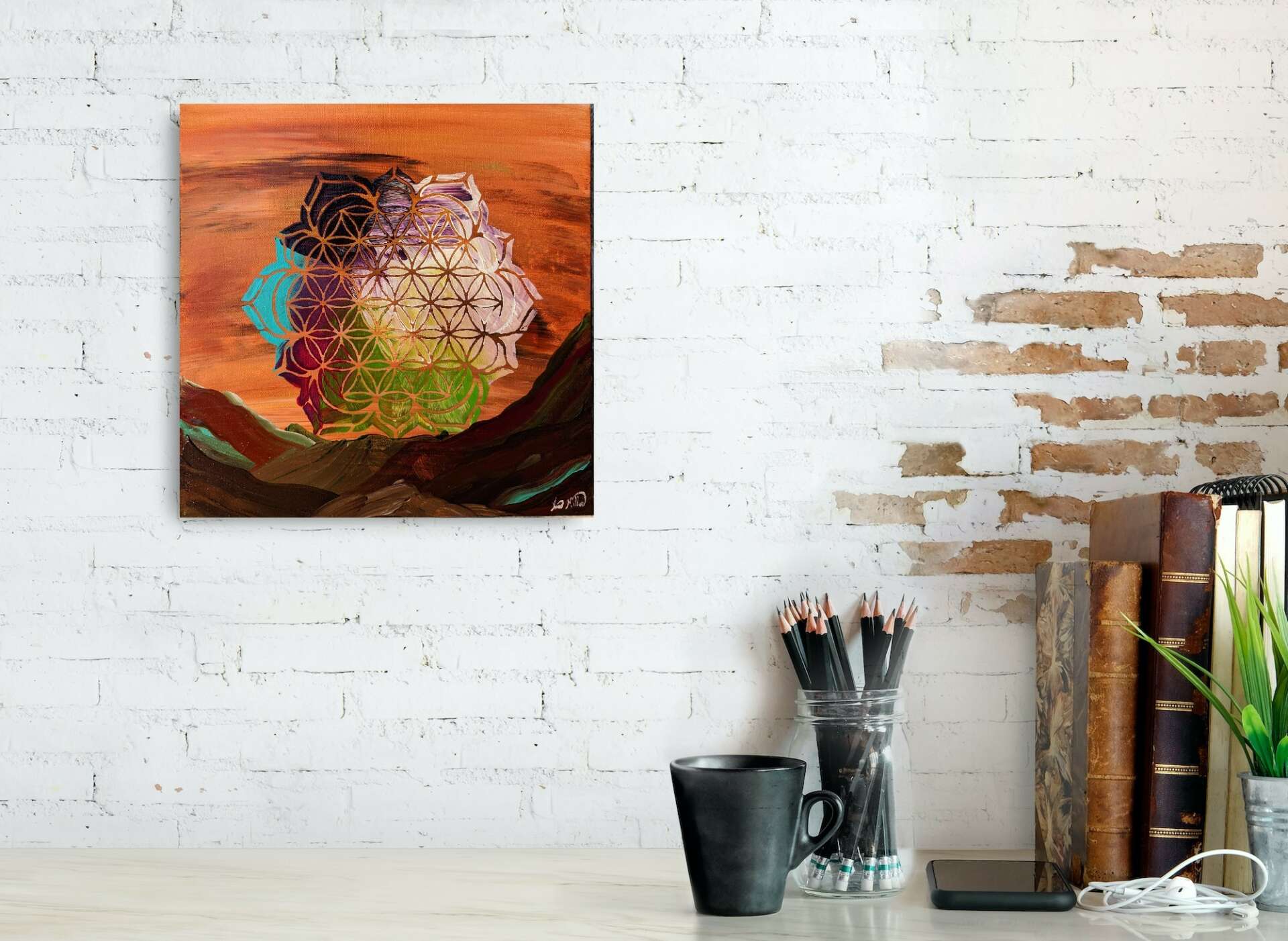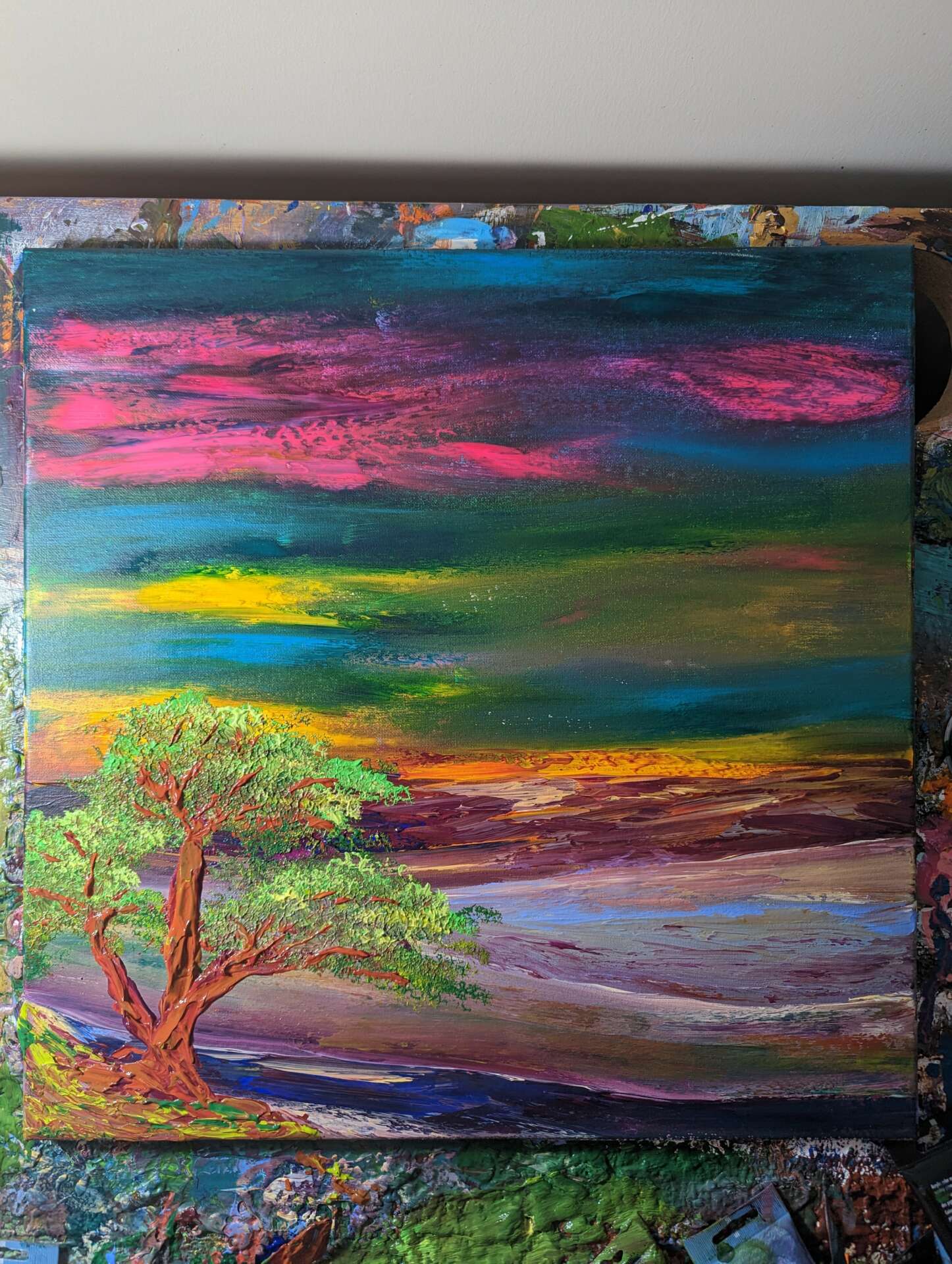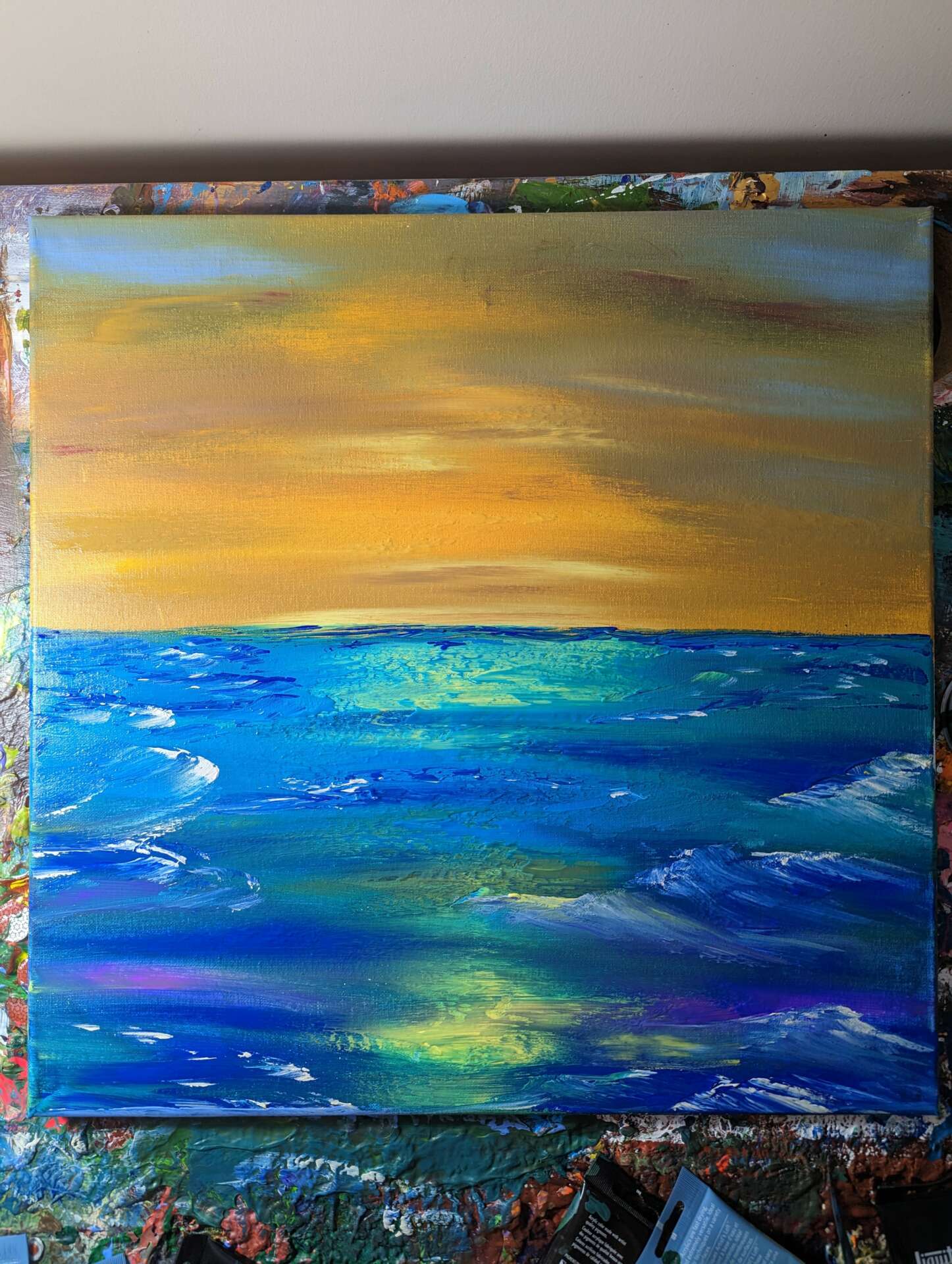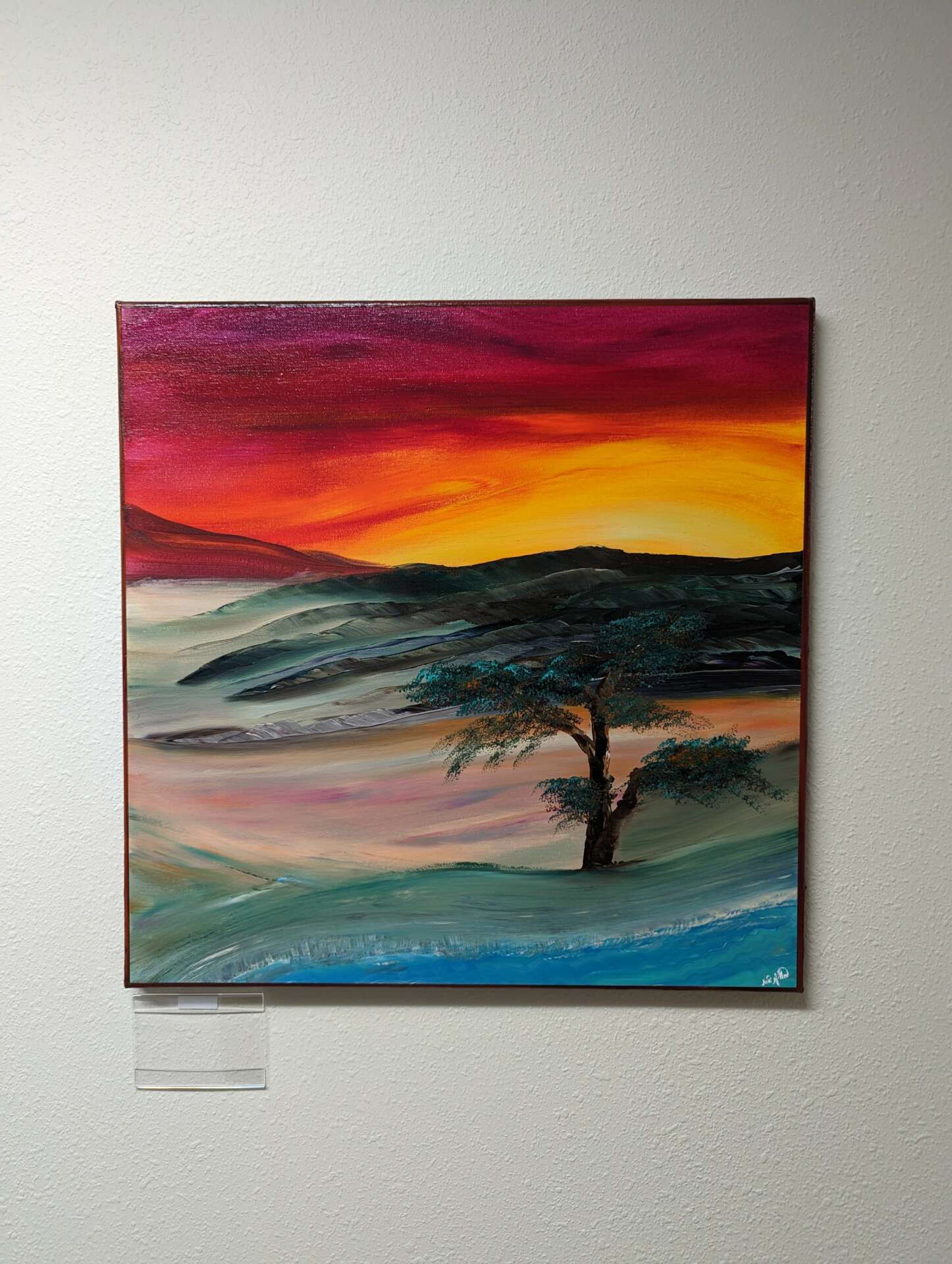We recently connected with Nico Miller and have shared our conversation below.
Nico, appreciate you joining us today. We’d love to hear the backstory behind a risk you’ve taken – whether big or small, walk us through what it was like and how it ultimately turned out.
Taking a risk…
Or as I like to call it, Jumping Into The Abyss.
As I have often reflected on this practice, I am reminded of a painting I created titled, “Unzip.” And yes, jumping into the abyss is a discipline and practice. Taking a risk, for me, is not something I do one time in my life. I do it repeatedly. In different fields, studies, concepts, or situations in life, the common factor is choice. Taking a risk means choosing it… Consciously. And that’s where we come to realize just how powerful we really are. Choosing to take a risk and jump into the unknown. It’s intimidating. It’s daunting, and often, I have felt like it’s not worth the anxiety, stress, or even failure. And yet, every time I take a risk, I grow, and I learn more deeply about myself than if I wouldn’t have.
So why? As I ask myself here… Why do I take risks with my art? And the answer is simple.
There is only one of me. I get one shot at this. This thing called life. And to block this conscious act of vitality through expressional transmission of cognitive movement, creation, and art, will leave me empty. Will kill me unfulfilled. For this art journey is not about how good I am, it’s not about comparing. It’s not even about if I believe in my work. It’s about remaining open. Keep the channel open, as Martha Graham so beautiful puts… “Keep the channel open.” Simple. Powerful. She speaks with such truth and simple words, that they have shook my very core, and encouraged me to take risks in my art.
So here I am. A full time artist. As well as managing my own private practice in the healing therapy world. I’ve created over 900 original canvas works, and I’ve sold just about 500 of them. I am studying to become an Art Therapist, looking to further my career in the professional, medical field of therapy, aiming to help pave the way for humans to find other mediums to express themselves and find healing within.
I’m grateful, and fulfilled. That’s all I could ever want in this journey. It has been really neat watching my own growth through this whole process.
Nico, love having you share your insights with us. Before we ask you more questions, maybe you can take a moment to introduce yourself to our readers who might have missed our earlier conversations?
Where did this all begin? Well… It started with my own desire to heal. I had lost so much that I held dear to my heart, that the pain was overwhelming, and I needed help. I turned to psychedelics initially. Which led me to art. And I found a place of creativity that was completely vulnerable. I was speechless at how art left me. It was so cool! Now, I’m not advocating you, the readers, to go do drugs to find your way. It’s just how it happened for me. I’m proud to say I am coming up on 2 years of sobriety as I write this. The healing journey is beyond art. It’s about choice. Choosing to face what has been ignored and pushed away for so long. And I’m still creating art! I am no longer dependant on substance to express how I want to express, and I believe this is noteworthy to give shout-out to in my origin story, because, my origin story is still in development. Even after all these years.

How can we best help foster a strong, supportive environment for artists and creatives?
This question is a deep one… It opens a door to discuss ethics in the art world. And while I would like to dive into the long battle of theft within the art world, I’d also like to address how society can show up for us artists, as well as, how us artists can show up for ourselves and our society.
To address the theft epidemic. Look everyone, just stop stealing art. Even in the digital world through social media means, it’s rampant… The NFT realm is a great example also. There are art thieves making duped accounts representing artists and making huge profits off of their work. And we thought the embedded codes in NFTs were a way to solidify who the true digital artists are, and provide financial stability for them, as they deserve.
Theft, historically, has been the story of the artist alongside making it. And it hasn’t ended, nor do I see it ending any time soon. What I can do is encourage our society to give credit where credit is due. If something has influenced you, say so. If someone has influenced you, say so. I also speak for myself here.
There are some days when I see a meme, and I download the image and save it to share to my social media for later. I did not take the time to investigate who made it, which means, I am not giving credit to this meme creator. And I need to. It’s really simple. And I’m guilty of this act of thoughtless theft, so while I encourage myself to continue being aware, to continue choosing to give credit where credit is due, I also encourage our society at large to do this as well. It’s so easy to steal. It’s so easy to download an image of someone’s art and save it without asking. So how can you support us artists? Stop stealing. Ask for consent. Please.
As far as our “thriving creative ecosystem.” I really enjoy being a full time artist. In all forms. Canvas artist, photographer, chef, writer… All of these require an exchange of energy. Most commonly, my physical creation for money. I like money. Money helps me pay bills and keep eggs in the fridge so I can continue doing this art thing. It’s really nice, and I think this is the most beneficial form of support and energetic exchange in our ecosystem. I make a thing, you like the thing, take the thing, thanks for the money things. It works, and always has, and most likely always will.
The difficult part about being a canvas artist is this: Most canvas art, if not all canvas art, has this mentality of preservation. Varnishes, museums, etc etc… And for someone like me, who has made a crap ton of canvas art, who also considers themselves to be an environmentalist minimalist, having a crap ton of art in my storage that’s intended to be preserved doesn’t sit very well on my heart. I’ve been searching for a way to make biodegradable canvas. Paint… Ink… But with the mentality of preservation, why would a collector pay thousands of dollars for my work if it just… Disappears?
And this is where you amazing humans come in with support. Crowd-Funding. I’m the artist. I have an ability to become the intersection between the invisible and the visible. I encourage collectors and supporters to reframe thinking about what preservation looks like. Toss it out the window. Plain and simple. Shift your investment into the artist themself. Donate money to them and their business, in exchange of their existence as just that. An artist. Allow me to create for you. Allow me to find biodegradable ways, ethical ways, environmental ways to create beautiful things for you, while ensuring me to keep eggs in my fridge, and a roof over said fridge. I have Patreon. I have a means for crowd funding. But it takes a big movement. A shift in both our thinking that preservation of art is no longer the answer. We want to be real? Let’s be present. And experience life. Together.

Have any books or other resources had a big impact on you?
For any artist that reads this, I would like to recommend a book that really shifted my perspectives. It’s called, “Art & Fear” by David Bayles and Ted Orland. This book is influential, inspirational, and quite frankly, paints a beautiful picture about what struggles exist, functional management techniques, concepts, and ideologies, as well as, encouragement to let go.
In fact, this reminds me of another book called, “The Art of Letting Go,” by Damon Zahariades. This book is about human condition and can be applied to us creatives through our journey of self, practice, and creativity.
And finally, a book that swept my heart away and had me in tears within the first few lines. If you choose to read any of these, read this one. “The Art of Asking,” by Amanda Palmer is poignant and necessary for any artist to read. How to be f*cking vulnerable. How to be real. How to face yourself in the mirror and remove the mask. And ask another human to show up. It’s an absolutely powerhouse of a read. 


Contact Info:
- Website: Nicosartcorneroriginals.com
- Instagram: https://www.instagram.com/nicosartcorner
- Facebook: https://m.facebook.com/groups/nicosartcorner/?ref=share&mibextid=NSMWBT
- Patreon: https://www.patreon.com/Nicosartcorner


